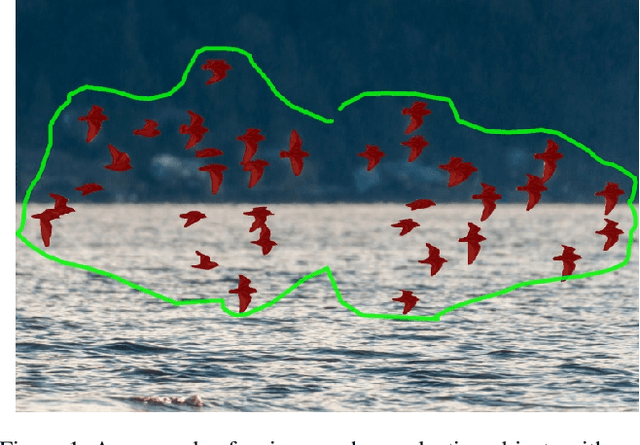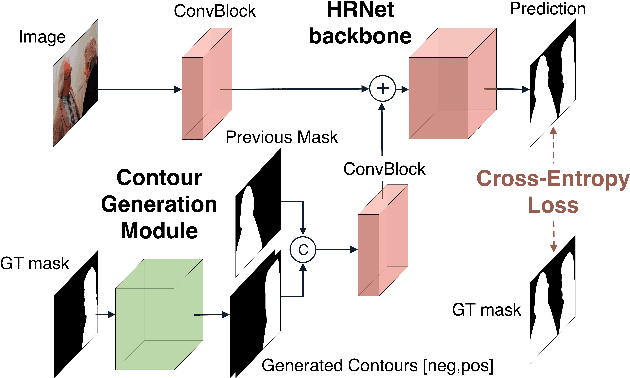Polina Popenova
Contour-based Interactive Segmentation
Feb 13, 2023



Abstract:Recent advances in interactive segmentation (IS) allow speeding up and simplifying image editing and labeling greatly. The majority of modern IS approaches accept user input in the form of clicks. However, using clicks may require too many user interactions, especially when selecting small objects, minor parts of an object, or a group of objects of the same type. In this paper, we consider such a natural form of user interaction as a loose contour, and introduce a contour-based IS method. We evaluate the proposed method on the standard segmentation benchmarks, our novel UserContours dataset, and its subset UserContours-G containing difficult segmentation cases. Through experiments, we demonstrate that a single contour provides the same accuracy as multiple clicks, thus reducing the required amount of user interactions.
Foreground-aware Semantic Representations for Image Harmonization
Jun 01, 2020



Abstract:Image harmonization is an important step in photo editing to achieve visual consistency in composite images by adjusting the appearances of foreground to make it compatible with background. Previous approaches to harmonize composites are based on training of encoder-decoder networks from scratch, which makes it challenging for a neural network to learn a high-level representation of objects. We propose a novel architecture to utilize the space of high-level features learned by a pre-trained classification network. We create our models as a combination of existing encoder-decoder architectures and a pre-trained foreground-aware deep high-resolution network. We extensively evaluate the proposed method on existing image harmonization benchmark and set up a new state-of-the-art in terms of MSE and PSNR metrics. The code and trained models are available at \url{https://github.com/saic-vul/image_harmonization}.
 Add to Chrome
Add to Chrome Add to Firefox
Add to Firefox Add to Edge
Add to Edge